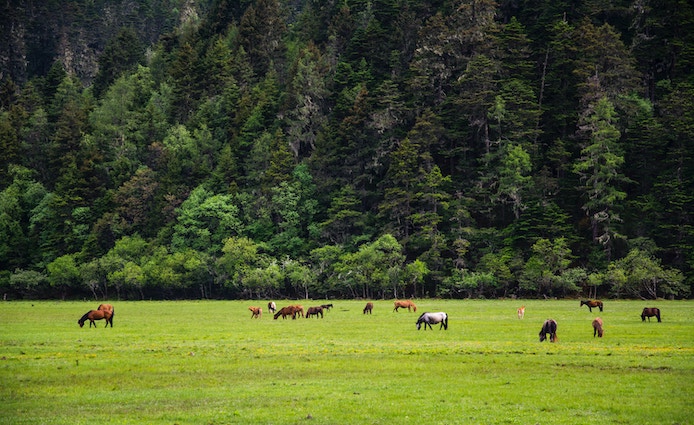
Pudacuo: Tibet's Pristine Alpine Wonderland

In the heart of the awe-inspiring Tibetan Plateau, where jagged peaks pierce the cerulean sky, lies a realm of sublime beauty and spiritual significance. Pudacuo National Park, often described as Tibet's hidden gem, is an alpine wonderland that beckons travelers to explore its pristine landscapes, biodiversity, and the cultural tapestry woven by the Tibetan people.
An Alpine Oasis
Pudacuo National Park, situated in the northwest of Yunnan Province, China, is a testament to the natural splendor that graces the Tibetan Plateau. Its name, "Pudacuo," translates to "a vast and open pasture" in the Tibetan language, reflecting the expansive and untouched wilderness found within its boundaries.
The park's jewel is undoubtedly its high-altitude lakes, notably Bita Lake and Shudu Lake. These pristine bodies of water, ringed by snow-capped peaks, mirror the heavens and the earth, creating a breathtaking tableau of nature's grandeur. The crystal-clear waters of Bita Lake mirror the surrounding landscape with startling clarity, offering a surreal reflection of the sky and the mountains that cradle it. Shudu Lake, on the other hand, is a captivating emerald gem, fringed by dense forests and carpeted with vibrant aquatic flora.
A Biodiversity Hotspot
Beyond its picturesque lakes, Pudacuo National Park reveals itself as a biodiversity hotspot. The park is part of the Three Parallel Rivers of Yunnan Protected Areas, a UNESCO World Heritage Site. This designation is a testament to its ecological significance, as it is home to numerous rare and endangered species.
The elusive and graceful black-necked cranes find sanctuary here during their annual migration, while the endangered Yunnan snub-nosed monkey, a charismatic primate species, swings through the park's forests. Pudacuo is also a refuge for numerous plant species, including the revered Himalayan yew, used in traditional Tibetan medicine.
The Cultural Tapestry of Tibet
Pudacuo National Park is not only a sanctuary for wildlife and nature but also a window into the rich tapestry of Tibetan culture. The park is part of the Three Parallel Rivers Scenic Area, encompassing the traditional homelands of several Tibetan ethnic groups. Visitors have the opportunity to engage with local Tibetan communities, gaining insights into their way of life, traditions, and spiritual beliefs.
The park's landscapes hold deep spiritual significance for Tibetans, who consider the mountains, lakes, and forests as sacred. Pilgrims trek through the rugged terrain to reach the revered Mingyong Glacier and holy mountains like Kawakarpo, seeking blessings and enlightenment.
Conservation Challenges and Future Prospects
While Pudacuo National Park embodies the splendor of Tibet's natural and cultural heritage, it faces challenges in the form of climate change, habitat fragmentation, and tourism pressures. Balancing the needs of conservation with the aspirations of local communities and the demands of tourists is an ongoing endeavor.
Efforts are underway to promote sustainable tourism practices and strengthen conservation initiatives within the park. By involving local communities in these efforts, there is hope that Pudacuo's unique ecosystems and treasures will endure for generations to come.
Photo Credit: Unsplash
If there's any copyright issue involved, please contact us to delete.



